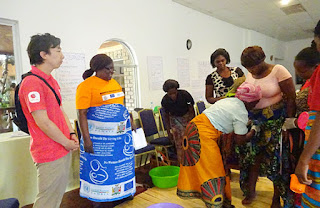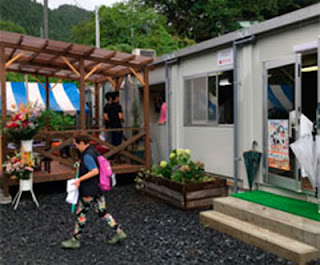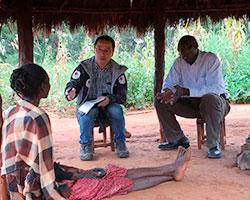To
save pregnant women and their babies in medically remote areas in Zambia, it is
necessary to detect abnormalities or other dangerous signs at an early stage, provide
first aid, and send pateients to an appropriate medical center as promptly as
possible. Because there are not enough medical workers in villages dotted across the vast country, local
volunteers in these communities play an important role in assisting mobile
clinics operated by midwives sent by the Ministry of Health, Zambia. AAR Japan,
which has been running a project to protect maternal and child health in
Chisankane, Kafue District since February 2016, gave local volunteers a training
seminar for maternal and child health from October 31st to November 5th,
2017.
Training
Seminar for Maternal and Child Health
A
total of 50 volunteers were initially selected from among 100 local volunteers
as a “group for the promotion of safe delivery.” Then, 25 group members took
part in AAR Japan’s first training seminar
for maternal and child health. These members were selected with consideration
of a mixture of different hometowns and trust relationships between volunteers
and communities. The aim of the training is to have local volunteers acquire knowledge
and skills for maternal and child health, including recognizing dangerous signs
during pregnancy, as well as providing information on breastfeeding benefits
and how to check and treat illness in newborns.
Role-playing an actual situation, role-playing exercises were carried
out
on November 4th, 2017. The left is Daisuke KANAMORI from AAR
Japan.
As
some local volunteers cannot read or write, the training adopts role-playing
exercises with picture cards so that everybody can easily understand the
lessons. For example, assuming a postpartum bleeding situation, volunteers learned
procedures from giving first aid for stopping bleeding and promoting adequate
hydration, to sending the patient to a medical center. Participants also practiced
how to place the pregnant woman in order to wrap a cloth as a temporary
treatment, following their instructor’s direction. The volunteers have
committed themselves fully for the training.
Other
training incorporated the benefits of using five senses such as singing, dancing
and gesturing with traditional songs in Zambia. These attempts also help
illiterate participants learn and remember the lessons more easily. In the last
day of the training session, we carried out a skill test to check their
understanding. As a result, all of the participants successfully completed the
training, getting much higher scores than those for the preliminary test carried
out on the first day.
Test for treatment of postpartum bleeding
Training materials include lots of pictures and illustrations for
illiterate volunteers.
Local volunteers listening to lectures with serious eyes.
The
group members for the promotion of safe delivery in Chisankane will play important
roles for recognizing and analyzing issues specific to their areas of
responsibility, and for finding solutions for maternal and child health
challenges. One of training participants, Mr. Mutonji, expressed his
enthusiasm; “I didn’t know what to do when a pregnant woman or her baby was in
a critical condition. This training taught me how to treat them. In my village,
I’ll definitely share what I have learned here so that we can help more mothers
and babies. “
AAR
Japan will continue to hold training sessions for maternal and child health,
and working on protection of mothers and babies in cooperation with local
volunteers.
.
In
addition to public donations, this activity has been subsidized by the Grant
Assistance for Japanese NGO Projects by MOFA
Reporter
Daisuke
KANAMORI, Lusaka Office since November 2016
Born
in Yamaguchi, Japan. After graduating from university, he joined support activities
for Tohoku earthquake affected areas while working in a private company. Then,
he studied the reconstruction after the civil war in Rwanda at a graduate
course in U.K and then learned French in France. He joined AAR Japan with an
aspiration of doing something he can do in this society as a Japanese. He hopes
to improve rates of the high maternal and neonatal mortality in Zambia. He
enjoys playing football and futsal games. (Profile as of the date of the
article)
Translated
by: Ms. Satomi Tomishima
Proof
reading by: Mr. Allan Richarz




















